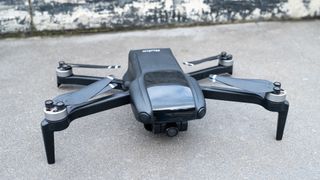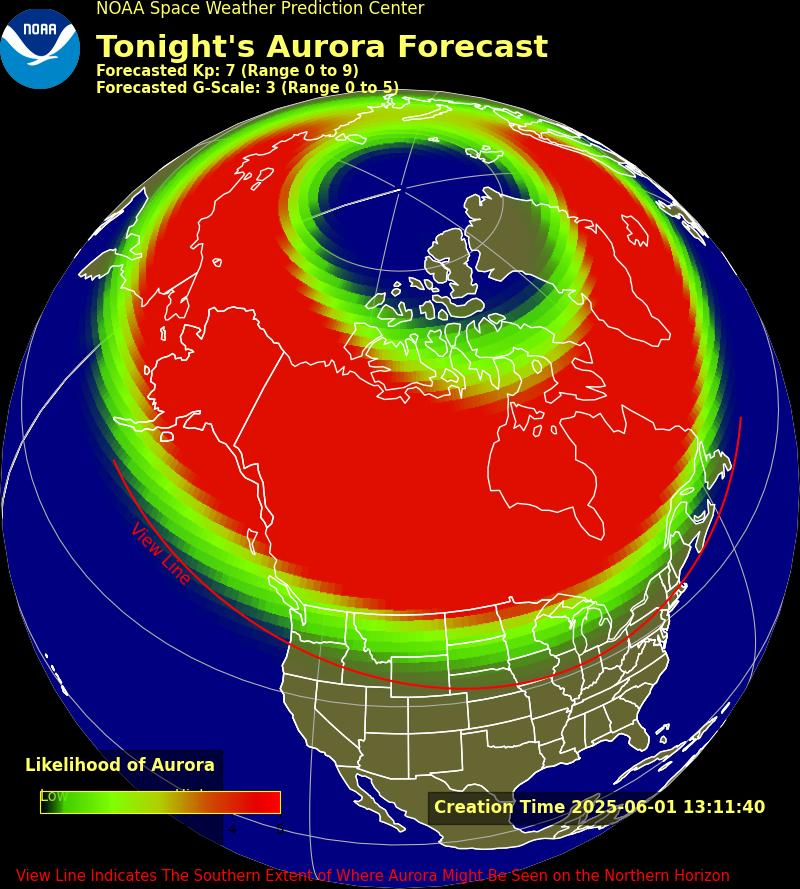Ruko drones are popular options for beginners, and the Ruko U11MINI is a sub-250 g model that weighs just 8.29 oz / 235 g — one of the lighter drones in this popular category.
With some impressive drones released in 2024, the U11MINI does not qualify as one of the best beginner drones because competition in this category has seriously heated up, but it remains an option to consider.
Key Specs
Weight: 8.29 oz / 235 g
Dimensions: 5.55×3.42×2.44 in / 141x87x62 mm folded / 12.71×10.67×2.44 in / 323x271x62 mm unfolded
Battery: 2200 mAh Li-ion / up to 35 minutes flight
Charger type: USB-C cable
Modes: Cine, Normal, Sport
Video transmission range: 1.86 miles
Video resolution: 4K, 2.7K, 720p (720p stored on phone)
Frame rates: 4K 20 FPS, 2.7K 30 FPS, 720p 20 FPS
The U11MINI comes in a complete kit with everything you need to begin flying, including a couple of batteries which is always useful. Plus, it offers a range of basic features we have come to expect in even the most basic drone models.
Flight performance is pretty good with responsive controls and agile flight, so as a first drone, it could be a worthwhile option for familiarising yourself with drone flight and controls.
Like most less expensive beginner drones image quality is not the best, but you can capture JPEG photos in 4K dimensions, which equates to 8.2MP.
Video can be captured up to 4K, but the frame rate is a little low at this resolution coming in at just 20 FPS. This certainly isn’t a deal breaker, but it is something to be aware of if you require 4K 30 FPS video.
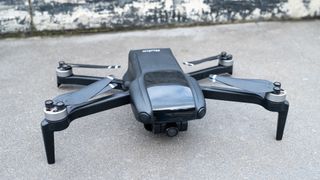
Ruko U11MINI review
Ruko U11MINI review: Design
- Small and lightweight
- Folding design
- Good controller
With such a small, lightweight and foldable design, the Ruko U11MINI is a highly portable drone and, importantly, doesn’t require FAA registration or Remote ID if it’s being used recreationally. This is great for beginners because it takes some of the hassle out of drone ownership thanks to simpler rules.
This black drone has two blue lights on the front which you might think would indicate the direction it’s facing, but being such a small drone they are impossible to see once you’ve flown away. They look good, but it is a shame they are not brighter. The downside to brighter lights would, of course, be a greater drain on the batteries, so from that point of view it is not a bad thing.
Battery life and flight times are advertised as up to 35 minutes, but during testing, flight times averaged just over 20 minutes. To be fair, the temperature in the UK is dropping to single figures, and it was windy during flights, so in warmer and calmer conditions, battery life would naturally improve.
Moving on to build quality, the drone is perfectly adequate but it is not the best we have seen. This is a folding drone, which makes it more compact for transportation and storage, and combined with the low weight, certainly makes it comfortable to carry around. Not to mention, the carry case that is included in the kit is small and has a useful handle at the top.
The controller is of higher build quality than the drone itself, with an array of direct access controls for the camera, gimbal and to initiate Return to Home. It’s also comfortable to hold and the control sticks can be stowed at the bottom of the controller during transportation and storage. Finally, the phone holder extends from the top and can accommodate small and large smartphones, with space to store the phone cable, which is useful.
Ruko U11MINI review: Functionality
- Basic subject tracking
- Level 4 wind resistance
- Return to Home
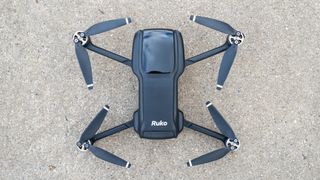
The U11MINI is a basic beginner drone, and as such the features are basic but also standard for a model of its type. GPS positioning is provided by GPS and GLONASS satellites with a horizontal and vertical accuracy of ±1.64 ft / 50 cm. This appears to be correct because there is noticeable movement of the drone in all directions during hovering.
GPS also brings with it Return to Home (RTH) functionality, and you can set the RTH altitude within the Ruko U11 app. Then there’s a barometer, optical flow sensor, and TOF. These are all useful, but as you would expect they are no match for full-blown obstacle avoidance sensors, which are an expensive feature only seen in the best drones.
With a range of features included in most Ruko drones, pilots can take advantage of GPS Follow Me, Image Follow, Waypoints, Point of Interest, and digital zoom to name but a few. These features all work, but they are far from being refined and the subject is not always kept in the center of the frame. Also, the fact that there is no Image Stabilization, mechanical or electronic, means that subject tracking features like all videos produce bumpy results.
One area where the U11MINI does excel for a drone of its price point is in terms of flight performance and controls. Controls are responsive and it is certainly nimble when flown in Sport mode, with a top speed of 26.6 mph. Cine mode is the slowest with Normal being the flight mode pilots use most of the time for a balance between speed and battery usage.
No sub-250 g drone is well suited to strong winds, although some do offer Level 5 wind resistance. The U11MINI offers Level 4 wind resistance, which equates to speeds of up to 18 mph, so while not the most powerful drone of its type, it was powerful enough to handle this wind level with ease during testing.
One negative that must be mentioned is that the instructions state that pairing between the controller and drone takes up to 51 seconds, and it certainly does take that long, if not longer sometimes.
This has to be done every time you switch the drone on which is a little frustrating, to say the least. You also have to keep your smartphone unplugged during the pairing process because this seems to stop the drone and controller from connecting.
Ruko U11MINI review: Performance
- Strong image processing
- Up to 4K 20 FPS video
- Automatic camera
Like most drones, the U11MINI performs best in terms of image quality in brighter conditions due to the small sensor. There is not a great deal of information about the camera and lens itself, but it appears from the specs that a Sony sensor is used, which captures photos in 4K dimensions suggesting an 8.2MP resolution.
Camera control is fully automatic, so it’s a point-and-shoot affair for both photos and videos, with 4K capture at 20 FPS and 2.7 at 30 FPS. This framerate is low for 4K video these days, and it would be much better if 4K 30 FPS was available for smoother videos at this resolution.
The main problem with a fully automatic camera is that you have no control over exposure compensation, so some shots will be perfectly exposed, others are underexposed and the rest will be overexposed. Photo and video capture can sometimes feel like a lucky dip.
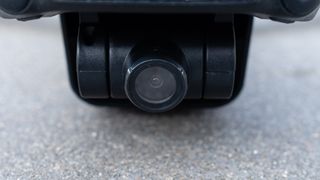
Image quality isn’t great and both photos and videos exhibit strong artifacts; halos from oversharpening and generally far too strong in-camera processing. Also, depending on the pitch of the gimbal, which can be set between 0 degrees and 90 degrees, severe barrel distortion is present. Distortion is at its lowest when the camera is facing forwards but there is some pincushion distortion, with tilting down around 45 degrees being where barrel distortion is most visible.
We have already mentioned the absence of Image Stabilization which means videos are bumpy. But alongside this, another symptom of no stabilization is that if a side wind is blowing the drone, the horizon is captured at an angle rather than straight as it should be. So, although the U11MINI can handle Level 4 wind, it is more suited to calmer conditions when shooting photos and videos.
Ruko U11MINI video
Ruko U11MINI review: Cost
Ruko drones are popular in the United States and this can be attributed to price. The Ruko U11MINI is a beginner model with an attractive price of $260 / £198, which removes the barrier of cost from drone ownership. However, with the release of the DJI Neo at a similar price for the base kit, there will be some seriously tough competition for entry-level beginner drones like the U11MINI.
In the kit, you get the U11MINI drone, a controller, two batteries, two USB-C cables for charging the batteries directly, a spare set of propellers, and a carry case. It’s a complete kit with everything you need except for a smartphone where you will also have to download the Ruko U11 app for adjusting drone settings, using the camera, and accessing flight features.
Should you buy the Ruko U11MINI?
The U11MINI flies well with responsive controls, so from a flight point of view it provides a great option for getting to grips with flight controls before upgrading to a more expensive model. It also has useful yet basic features such as GPS positioning, downward sensors and Return to Home.
Where it is lacking, unfortunately, is in the camera department, where image quality is not great and suffers from distortion, oversharpening, and general overprocessing of photos and videos leading to artifacts. So, if you are simply looking for a drone to fly for the sake of flying, the U11MINI is perfectly capable, but as a camera drone, there are better options available for a similar price.
If the Ruko U11MINI isn’t for you
The DJI Neo is a beginner drone that is affordable and can be flown in multiple ways, including autonomously with clever subject tracking, with the DJI Fly app via your smartphone, or using a traditional controller. Image quality for photos and videos is also great for a drone of its price.
RELATED STORIES:
The Holy Stone HS900 Sirius is an impressive sub-250 g beginner drone with a host of useful features, excellent flight performance and impressive image quality when capturing photos and videos. This is a drone that will easily take you from beginner to intermediate drone pilot and beyond.
The DJI Mini 4 Pro is the best sub-250 g camera drone money can buy with a fantastic camera for capturing photos and videos. It also features advanced obstacle avoidance and subject tracking, so this is a drone that could provide years of faithful service in a compact and lightweight package.
